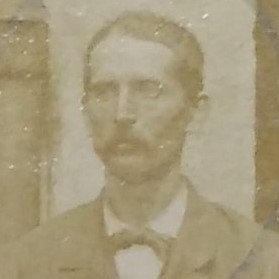
1853 - 1901
Gioanni-Luigi Richetto
Summary
Name:
Gioanni-Luigi RichettoYears Active:
1893 - 1899Birth:
March 22, 1853Status:
DeceasedClass:
Serial KillerVictims:
4Method:
Bludgeoning / Stabbing / DismembermentDeath:
December 14, 1901Nationality:
Italy
1853 - 1901
Gioanni-Luigi Richetto
Summary: Serial Killer
Name:
Gioanni-Luigi RichettoStatus:
DeceasedVictims:
4Method:
Bludgeoning / Stabbing / DismembermentNationality:
ItalyBirth:
March 22, 1853Death:
December 14, 1901Years Active:
1893 - 1899bio
Gioanni-Luigi Richetto was born on March 22, 1853, in Chianocco, a small town then part of the Kingdom of Sardinia. His early life was marked by deep family dysfunction and generational mental illness. His father, Luigi Richetto, squandered the family’s inheritance on gambling, wine, and a life of debauchery before being expelled from a job at the Royal House in Turin for theft in the late 1860s. Declared insane in 1872, Luigi Sr. died in a mental institution the following year. His wife, Maddalena Giai, Richetto’s mother, would also be institutionalized in 1881 for “melancholic hysteria,” dying there in 1882.
Gioanni followed his father to Turin in 1863 and pursued studies at the Professional School. After graduation, he secured a respectable position with the Railway Company of Upper Italy. But this phase of stability didn’t last long. In 1882, Richetto was convicted of robbery and served five years at Fossano prison. After his release in 1887, he briefly returned to his mother’s family in Bussoleno before relocating to France.
His migration path was indirect: first Algeria, then Marseille, and finally Lyon in December 1887. At first, Richetto tried to live honestly, he worked as a nurse, and later as a servant, but was dismissed for theft. By 1894, he had reinvented himself as a shoemaker, eventually working as a concierge for the Camillians, a religious congregation.
murder story
Richetto’s killing spree began in 1893 and spanned nearly seven years. His first known victim was Marie Bernaz, discovered dead in her apartment on April 24, 1893. Her face was bloodied, with wounds on the temple and strangulation marks around her neck. Richetto was questioned at the time but successfully faked an alibi. With no strong evidence against him, the case was dropped, and suspicion briefly shifted to the victim’s husband.
On December 7, 1894, 55-year-old furniture dealer Régis Planial disappeared under mysterious circumstances. Days later, body parts began to surface, first a torso in the Rhône River, then in April 1895, more remains were found across several remote locations, including islands along the riverbanks. The dismemberment was surgical, with sharp, penetrating wounds and post-mortem beheading. The remains, though never formally identified, were later believed to be Planial’s. Richetto was not charged due to insufficient evidence.
Marguerite Long, a 63-year-old widow, vanished on July 21, 1898. Though no body was found initially, Richetto’s presence in her home and subsequent possession of some of her belongings linked him to her disappearance. Again, the authorities lacked physical evidence to proceed at that point.
The final murder that sealed Richetto’s fate occurred on December 19, 1899, when Augustine Penet, a milkmaid, disappeared after informing several people she was visiting Richetto in Saint-Just. Just weeks later, on January 2, 1900, strange packages of “meat” were found buried on a property near the Camillians' residence. By January 6, officials had unearthed multiple dismembered body parts, two human heads, and flesh that had partially turned to adipocere—evidence that some remains had been submerged or preserved in moisture for months or even years.
Identified by her daughter on January 8, Penet’s head was recognized, leading investigators directly to Richetto. A search of his home yielded newspapers dated from the months the victims went missing, as well as bloodstains, women’s stockings, a receipt from Marguerite Long, and a foul-smelling suitcase filled with lime and sawdust. A large kitchen knife was found buried near the crime scene, and the attic above his quarters was soaked in human fat and blood.
Despite the overwhelming circumstantial evidence, Richetto was only convicted for two murders, Long and Penet, due to the inability to formally identify the remains of Bernaz and Planial. On June 29, 1901, he was deported to the notorious Devil’s Island in French Guiana to serve his life sentence. There, the tropical diseases and harsh prison conditions took their toll. Gioanni-Luigi Richetto died on December 14, 1901, just months into his incarceration.